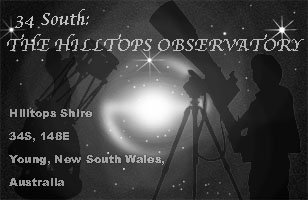OhNo wrote: ↑Thu Mar 11, 2021 1:55 am
About that time frame one of the Mods on the old site and an Admin here suggested pretty strongly that people who only did AP weren't a savy with what space is about. I have kept quiet about that offensive insinuation until today. For me, AP proved to be the opposite. The better I got at taking images, and my equipment improved the more I saw out there! My nature will not let me overlook why or what I image. Now about 1/2 my time is spent on researching what it was and why it is there,
Like Joe, since I do not have access to the comments you speak of, I can only comment based on your recollection. The
AP vs visual thing has always been a serious point of contention for some folks. Most of these type of "my way is better than your way" discussions have some minor basis in truth, but those come apart when they are applied in a general broad brush sense.
I am a manual visual astronomer. Its all I've known and its all I am interested in. I've known some folks who use only go-to that know little to nothing about the sky, or the stars and constellations. They felt that it was unnecessary because the hand controller was all they needed. But on the flip side of that, I've known go-to folks who know the sky every bit as well as I do. Some of them will turn off those systems to do star hopping because 1) they enjoy that process as well and 2) they simply do not want to be solely reliant upon a system. Some automated observers understand that should their systems fail, either because of power source or mechanical failure then they can carry on and not have to scrub the outing. So to generally say that everyone who uses go-to is ignorant of the sky itself is simply a non-starter
In that same vein, anyone who feels that those who pursues
AP exclusively do not understand the sky or the objects is simply tossing all those folks into one basket. It is true that some folks who pursue
AP only may not educate themselves deeply about the sky and/or objects. They only want to shoot pretty pictures without having to waste the time (in their view) to really learn about the sky and its nature. Then again, you have those
AP'ers who have a desire to be more dynamic in their approach. They understand the nature of the objects they pursue and they have a deep abiding love and knowledge of the night sky because they realize the fact that this knowledge enriches the experience.
There are those folks who feel that purely visual observers and particularly those that eschew any sort of electronic assist (i.e., go-to or push-to) are simply dinosaurs, relics of the past who are set in their ways, unable to change with the times. Being one of the old school, I silently smile at this mindset. While I am certain in some cases that may be true, perhaps they do not consider that the reason some of us prefer that methodology is more dynamic than what they might consider. First, using myself as an example, I simply love doing things that way. I find it a relaxing endeavor to moving silently through the sky in search of objects, confident in my knowledge of the stars and constellations. I also like the historical context of doing it the way that I do. I feel more at one with the greats of visual astronomy who laid the foundation for what we understand today. While I have the advantage of knowing where things are already based on their work, it still gives me a sense of camaraderie with the historical figures that I've studied and come to respect deeply.
So the generalities that one often finds in these kinds of discussions, such as:
--manual star hoppers are simplistic and stuck in their ways
--those who use go-to exclusively don't know the stars or constellations
--
AP'ers don't understand the sky well or the nature of their targets
do not hold up well when trying to apply them as a broad brush description. Is there at least a small basis in truth to some of those stereotypes? Sure there is, just as there is arrogance among some of each group. There will always be at least a small amount of "my way is better than your way" mentality. We are human, and unfortunately, one of our human failings is to believe that how we do things is the only right way. But to apply those standards to everyone who pursues their interest in the hobby in their preferred manner is simply wrong-headed.
When I used to supervise people and training them in the job at hand, I would tell them, this is how I do things to get the desired end result. You can do it the same way or you can put your own spin on it. The key is that you reach the desired end. The main point is there is more than one way to an end, with some ways being more efficient in obtaining said end. But that does not mean if you use a different method than I to get there, that either of us wrong. In my view, the ultimate goal of the hobby is fun and education. As I am fond of saying, "the more fun we have, the more we learn and the more we learn, the more fun we have." The method we utilize to reach that goal is our choice. Whichever method you use to reach your desired end is the right one for you, whereas the method for the next person may be different. But that is okay and as it should be. So get out there and have fun learning all kinds of neat stuff.










